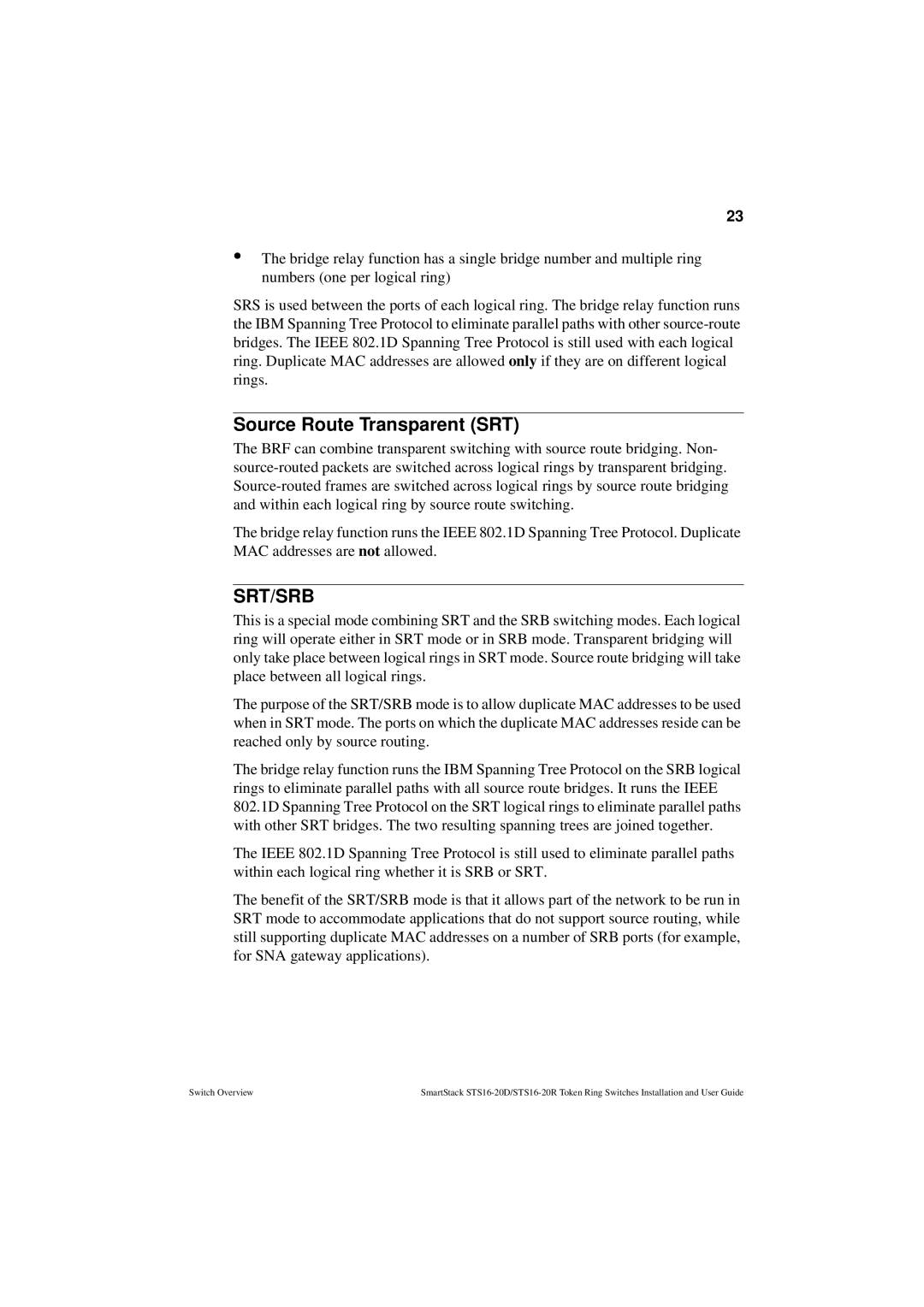
23
•The bridge relay function has a single bridge number and multiple ring numbers (one per logical ring)
SRS is used between the ports of each logical ring. The bridge relay function runs the IBM Spanning Tree Protocol to eliminate parallel paths with other
Source Route Transparent (SRT)
The BRF can combine transparent switching with source route bridging. Non-
The bridge relay function runs the IEEE 802.1D Spanning Tree Protocol. Duplicate MAC addresses are not allowed.
SRT/SRB
This is a special mode combining SRT and the SRB switching modes. Each logical ring will operate either in SRT mode or in SRB mode. Transparent bridging will only take place between logical rings in SRT mode. Source route bridging will take place between all logical rings.
The purpose of the SRT/SRB mode is to allow duplicate MAC addresses to be used when in SRT mode. The ports on which the duplicate MAC addresses reside can be reached only by source routing.
The bridge relay function runs the IBM Spanning Tree Protocol on the SRB logical rings to eliminate parallel paths with all source route bridges. It runs the IEEE 802.1D Spanning Tree Protocol on the SRT logical rings to eliminate parallel paths with other SRT bridges. The two resulting spanning trees are joined together.
The IEEE 802.1D Spanning Tree Protocol is still used to eliminate parallel paths within each logical ring whether it is SRB or SRT.
The benefit of the SRT/SRB mode is that it allows part of the network to be run in SRT mode to accommodate applications that do not support source routing, while still supporting duplicate MAC addresses on a number of SRB ports (for example, for SNA gateway applications).
Switch Overview | SmartStack |
